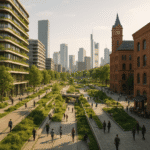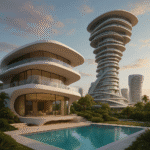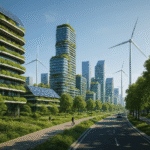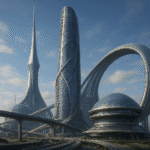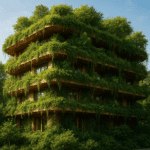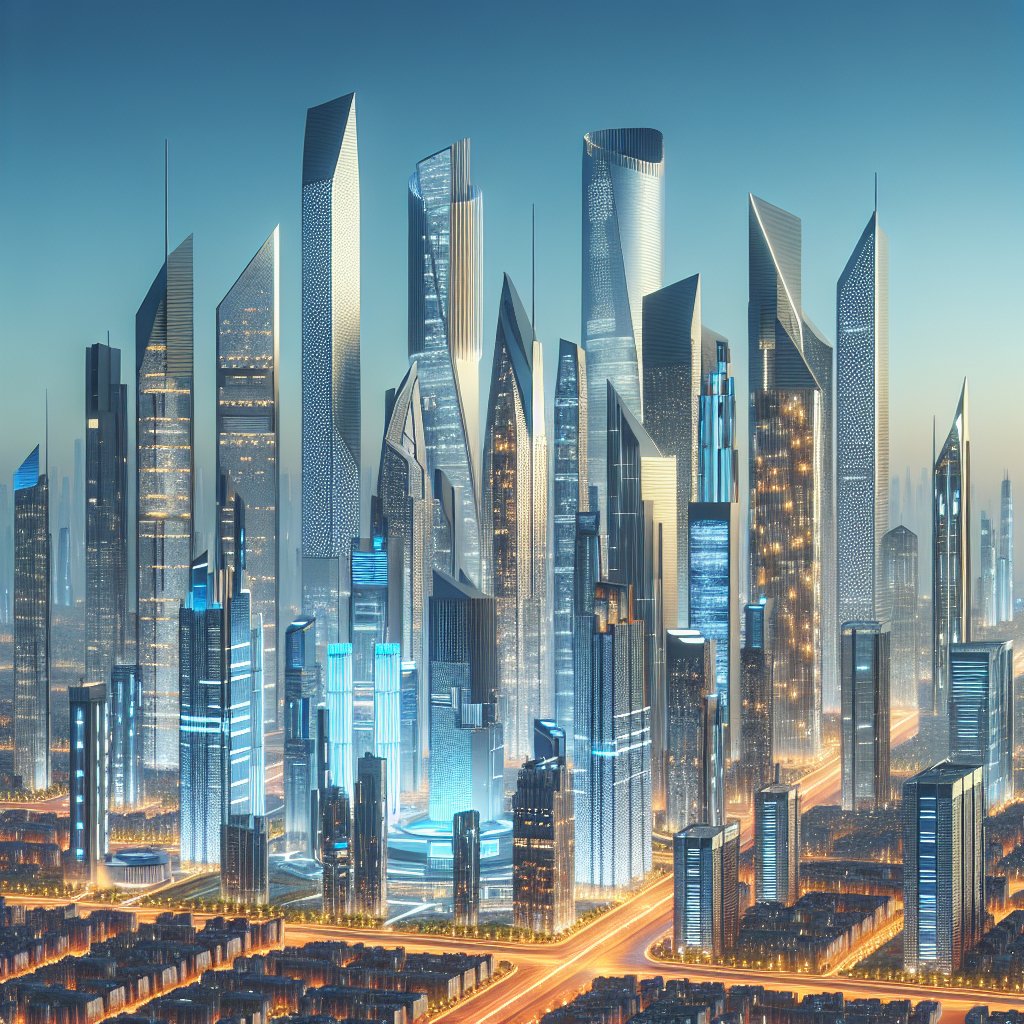Futuristic architecture has always been a fascinating subject, pushing the boundaries of design, technology, and sustainability. Skyscrapers, in particular, have become the epitome of this architectural evolution, with cities around the world competing to create the most innovative and awe-inspiring structures. This article explores the top 10 futuristic skyscrapers that not only redefine skylines but also set new standards for what is possible in urban design.
1. The Shard, London
The Shard, designed by Renzo Piano, is a striking addition to London’s skyline. Standing at 310 meters, it is the tallest building in the United Kingdom. The Shard’s futuristic design is characterized by its glass façade, which reflects the sky and changes appearance with the weather. The building is a mixed-use development, housing offices, restaurants, a hotel, and residential apartments. Its design emphasizes sustainability, with features such as a combined heat and power plant and triple-glazed windows to reduce energy consumption.
2. Burj Khalifa, Dubai
The Burj Khalifa in Dubai is not only the tallest building in the world but also a marvel of modern engineering. Designed by Adrian Smith of Skidmore, Owings & Merrill, the skyscraper reaches a height of 828 meters. Its design is inspired by the Hymenocallis flower, with a triple-lobed footprint and a series of setbacks that create a spiraling pattern. The Burj Khalifa incorporates advanced technologies to withstand the harsh desert climate, including a high-performance exterior cladding system and a sophisticated cooling system.
3. One World Trade Center, New York City
One World Trade Center, also known as the Freedom Tower, is a symbol of resilience and renewal. Designed by David Childs of Skidmore, Owings & Merrill, the building stands at 541 meters, making it the tallest in the Western Hemisphere. Its design features a cubic base that transitions into a series of eight isosceles triangles, creating a crystalline form. The tower is built with sustainability in mind, incorporating rainwater harvesting, energy-efficient systems, and recycled materials.
4. Shanghai Tower, Shanghai
The Shanghai Tower is a testament to China’s rapid urban development and architectural ambition. Designed by Gensler, the tower stands at 632 meters, making it the tallest building in China. Its twisting form is not only visually striking but also serves a functional purpose, reducing wind loads on the structure. The building is designed to be highly sustainable, with features such as a double-skin façade, wind turbines, and a rainwater collection system.
5. Lotte World Tower, Seoul
The Lotte World Tower in Seoul is a stunning example of futuristic architecture, blending traditional Korean design elements with modern technology. Designed by Kohn Pedersen Fox, the tower stands at 555 meters. Its sleek, tapered form is inspired by traditional Korean ceramics and calligraphy brushes. The building incorporates advanced technologies for energy efficiency, including a high-performance curtain wall system and a geothermal heating and cooling system.
6. Marina Bay Sands, Singapore
Marina Bay Sands is an iconic landmark in Singapore, known for its unique design and luxurious amenities. Designed by Moshe Safdie, the complex consists of three 55-story towers connected by a sky park that offers panoramic views of the city. The design is inspired by a deck of cards, with the towers angled to maximize views and natural light. The building incorporates sustainable features such as a rainwater harvesting system and energy-efficient lighting.
7. Kingdom Tower, Jeddah
The Kingdom Tower, also known as Jeddah Tower, is set to become the tallest building in the world upon completion. Designed by Adrian Smith + Gordon Gill Architecture, the tower will reach a height of over 1,000 meters. Its design is inspired by the folded fronds of a young desert plant, with a sleek, tapering form that reduces wind loads. The building will incorporate advanced technologies for energy efficiency and sustainability, including a high-performance façade and a state-of-the-art cooling system.
8. Taipei 101, Taipei
Taipei 101 is a symbol of Taiwan’s economic prosperity and technological advancement. Designed by C.Y. Lee & Partners, the tower stands at 508 meters. Its design is inspired by traditional Chinese pagodas, with a series of stacked sections that create a tiered effect. The building incorporates advanced technologies for earthquake resistance and energy efficiency, including a tuned mass damper and a high-performance curtain wall system.
9. Petronas Towers, Kuala Lumpur
The Petronas Towers are an iconic symbol of Malaysia’s economic growth and architectural innovation. Designed by César Pelli, the twin towers stand at 452 meters. Their design is inspired by Islamic art and architecture, with a series of geometric patterns and a sleek, modern form. The towers incorporate advanced technologies for energy efficiency, including a double-glazed façade and a sophisticated air conditioning system.
10. The Edge, Amsterdam
The Edge in Amsterdam is a pioneering example of sustainable and smart building design. Designed by PLP Architecture, the building is often referred to as the “smartest building in the world.” It incorporates a range of advanced technologies, including a digital ceiling that monitors occupancy and energy use, a rainwater harvesting system, and solar panels. The building’s design emphasizes flexibility and collaboration, with open-plan workspaces and a variety of communal areas.
In conclusion, these futuristic skyscrapers are not only architectural marvels but also symbols of human ingenuity and ambition. They demonstrate how innovative design and advanced technologies can create sustainable, efficient, and visually stunning structures that redefine urban landscapes. As cities continue to grow and evolve, these skyscrapers serve as a testament to the limitless possibilities of futuristic architecture.
